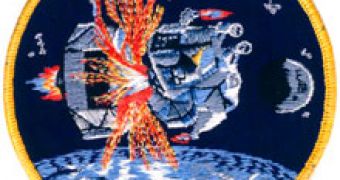Apollo 5 represented NASA's first unmanned flight that had the purpose of testing the Lunar Module meant for use in the mission to take the first man on the Moon's surface. Built by the Grumman Aircraft Engineering Corporation, the Lunar Module had the task of successfully landing two men on the surface of the Moon and returning them safely into the Moon's orbit, for the scheduled trip towards the Earth.
The spacecraft was launched on 22nd of January 1968 from Cape Canaveral, with the help of a Saturn rocket, and put into an orbit around the Earth. After about 45 minutes, the Lunar Module separated from the rocket's second stage and initiated a series of tests regarding the propulsion system, the restart systems and the safety of the persons which would eventually occupy it during the trip to the Moon.
During this time, the spacecraft executed two complete orbits around the planet, a separation between the Lunar Module and the Lunar Module adapter, and a scheduled 39 second burn of the engines, in order to simulate a descending approach and landing on the surface of the Moon. The only problem experienced all this time was related to the guidance system of the Lunar Module's descent propulsion system, which shut off the engines only after four seconds of burning.
NASA engineers concluded that the problem must be related to the pressurizing of the propellant tanks carrying the fuel. It was determined that, due to the fact that the tanks did not pressurize completely after the four seconds of burning initiation, the engines could not have reached the full thrust. The onboard computer's safety system believed that something was wrong with the module and executed a shut down of the engines.
After turning off the computerized guiding system, NASA resumed with the testing of the Lunar Module. The modification resulted in the creation of a burning procedure that involved firing the engines for 26 seconds at 10 percent thrust, followed by a 7 seconds burn at 100 percent. The third such burn, taking place 32 seconds later, involved a 26 second burn at 10 percent thrust and two seconds at 100 percent.
After the finalization of the tests regarding the descent propulsion system, NASA tested the 'fire in the hole' procedure, which involved firing the ascent engines with the Lunar Module adapter still attached. Such procedures were adopted for safety reasons and could have been used in the case of an abortion of the descent.

 14 DAY TRIAL //
14 DAY TRIAL //